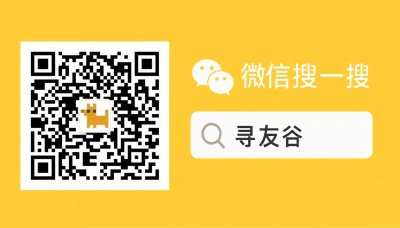What happened, where, and why you should care
Last week in class at a university in Beijing (pinpointing the city helps—this is common), a dozen international students were stuck swapping phone numbers manually because some hadn’t finished setting up WeChat. It sounds small, but here’s the reality: in China, WeChat is not just chat — it’s your banking frontend, your campus noticeboard, your ride-hailing remote, and the group chat where landlords, lab mates, and classmates live. For United States residents and students coming to or living in China, not having a properly configured WeChat account is like showing up to a class with no textbook.
This guide walks you through practical steps to set up WeChat the right way: account creation, verification, privacy settings, and a few technical-aside tips for developers or savvy students who need third-party login or enterprise accounts. I’ll also point out common scams and immigration-related friction you might face (yes, scammers target newbies), with real-world context from recent news so you don’t feel like you’ve been told this in a vacuum [Newstalk ZB, 2025-11-06]. If you plan to study, work, or move around multiple countries, remember immigration rules and visa changes are shifting the playbook for many — factor that into how you verify accounts and choose contact points [Business Today, 2025-11-06]. Also, China’s recent visa-free and cross-border travel/payment adjustments change how travelers connect during short visits, so a working WeChat is useful even for quick trips [ECNS, 2025-11-06].
This isn’t a marketing brochure — it’s a hands-on map. By the end you’ll have a checklist and the right settings to keep your account usable, secure, and friendly for life in China.
Step-by-step: set up your WeChat like a pro
Below I split this into four practical stages: create, verify, configure, and extend. Each stage has short steps and quick tips.
Stage 1 — Create a WeChat account
- Download the app:
- Use the official App Store (iOS) or Google Play where available. If Play Store blocks the app on your device in China, download from Tencent’s official site or reputable Chinese app stores. Don’t sideload random APKs.
- Register:
- Open WeChat, choose Sign Up, pick your country code (United States +1), and enter your phone number.
- You’ll get an SMS code — enter it. If SMS fails, try a different number or use a temporary US SIM only sparingly (WeChat flags repeated temporary numbers).
- Basic profile:
- Use your real name (matches passport if you’ll link bank cards or go through verification later).
- Add a clear profile photo — it helps friends and services trust the account.
Quick tip: If you already have a WeChat account tied to an old number, change the number in Settings → Account Security before you lose access to that SIM.
Stage 2 — Verification and account trust WeChat has a trust score system in practice: verified phone, contacts, and payment history reduce future friction.
- Verify phone and email:
- Phone is mandatory. Add email in Settings → Account Security → Email.
- Add friends slowly:
- Don’t blast friend requests. Add contacts you actually know: classmates, coworkers, landlord.
- Real-name tie-in (when needed):
- For linking Chinese bank cards or using WeChat Pay on the mainland, WeChat often requests real-name verification using passport or residence permit info.
- When asked, follow the in-app prompts. Have a photo of your passport ready.
- Avoid verification shortcuts:
- Third-party verification services or “fast passes” are scams (see common scams below).
Stage 3 — Privacy and safety (do this early)
- Privacy settings:
- Settings → Privacy → set “Friend Confirmation” to On so strangers can’t add you without approval.
- Turn off “Find Mobile Contacts” if you don’t want your phone contacts auto-appearing.
- Moments and visibility:
- Configure Moments visibility to “My Contacts” or custom lists. If you’re a student, consider a separate list for classmates vs personal friends.
- Two-step account security:
- Set a strong WeChat pay password (6 digits or stronger using passcode), and enable device lock (Settings → Account Security → Device Lock).
- Backups:
- Use WeChat’s chat backup to cloud or your computer client for important threads (chats with landlords, visa docs, or receipts).
- Watch out for phishing:
- Don’t click payment or login links in unsolicited messages. Scammers sometimes fake school or immigration notices.
Stage 4 — Useful extensions & developer note
- WeChat Pay:
- For US citizens, linking a Chinese bank card is ideal. You may be able to link an international card depending on region; options have improved, but linking RMB accounts is still best for daily life.
- Mini Programs:
- Install campus or travel mini-programs recommended by your university; they often handle dorm management, campus payments, and class signups.
- Enterprise accounts (WeCom / 企业微信):
- If your employer uses WeCom (WeChat Work), request a corporate account through HR. Keep work and personal WeChat separate where possible.
- For developers: OAuth & OIDC analogy
- If you’re building a campus app and want WeChat login, the flow resembles OIDC flows used with Keycloak or Dex: register your app as a client, set redirect URI, and use the provider’s credentials. In Keycloak you create a client, set callback URIs, and copy client secrets — same concept applies when registering third-party WeChat login for websites or services. The principle is: register your application properly, set correct redirects, and store secrets securely (see Keycloak/OIDC guides for step-wise config if you’re integrating logins).
Common real-world problems and how to fix them
- SMS not arriving: Try another phone number, restart phone, or ask WeChat support via the app. Temporary US numbers sometimes fail if used repeatedly.
- Account locked after adding many strangers: Open Settings → Help and Feedback → choose “Account Security” and follow verification steps. Be patient — sometimes human-review is needed.
- Linking bank card refused: Use a bank branch to confirm your identity, or request a local friend/roommate to help (don’t share passwords). For student accounts, campus bank branches often help with student cards.
- Scams and fake agents: Be skeptical of people promising fast bank links, visa help, or “official” campus passes in private messages. If someone pressures you for money or passport photos outside official channels—stop. Recent cases show scammers keep inventing immigration ruses; verify everything [Newstalk ZB, 2025-11-06].
🙋 Frequently Asked Questions (FAQ)
Q1: Can I register WeChat before landing in China?
A1: Yes. Steps:
- Download WeChat on your phone in the United States.
- Register with your US phone (+1).
- Complete basic profile and email.
- Limitations: WeChat Pay and some real-name features require Chinese bank cards or ID; mini-programs tied to local services may show limited functionality until you arrive.
Q2: How do I set up WeChat Pay as a US passport-holder?
A2: Roadmap:
- Obtain a local Chinese bank account (campus or commercial bank).
- In WeChat: Me → Wallet → Cards → Add card → enter details and verify with bank SMS.
- Complete real-name verification when prompted (passport + photo).
- If you can’t open a bank account, ask if your campus offers WeChat Pay top-ups via dorm cards or campus services as a temporary bridge.
Q3: My account was locked or flagged. How to recover?
A3: Steps to recover:
- Open WeChat → Settings → Help & Feedback → choose account lock/help.
- Follow the in-app verification prompts: sometimes it’s face-scan, friend verification, or passport photo upload.
- If locked for suspicious payments, contact the bank involved and WeChat support. Keep records: screenshots, transaction IDs, communication logs.
- If you suspect fraud, report it to local police and save documents for your embassy if needed.
🧩 Conclusion
For United States people and students planning to come to China or already there: setting up WeChat is not optional — it’s foundational. The goal here is simple: get a stable account tied to a reliable phone and email, lock down privacy, and verify only when you need to use pay or official services. Avoid quick-fix verification services and be skeptical about people offering “fast-track” solutions — scams around immigration and visas are still common and evolving [Business Today, 2025-11-06].
Checklist — your 4 quick actions:
- Register WeChat with a stable phone number and add an email.
- Turn on Friend Confirmation and device lock in Privacy settings.
- Prepare passport photos and bank details for real-name verification when needed.
- Join trusted campus or XunYouGu groups for local help and avoid unknown “agents”.
📣 How to Join the Group
If you want a friendly, practical place to ask follow-ups, join the XunYouGu WeChat community. How to join:
- On WeChat, search “xunyougu” (寻友谷) and follow the official account.
- Message the official account with your name and short reason to join (student, city, or ask).
- The assistant will invite you into country or city-specific groups. We keep things practical: housing tips, bank branch locations, and real student experiences — no spam, real people.
📚 Further Reading
🔸 Tougher immigration rules for Indians: US, UK, Canada, Australia raise bar for work, study visas
🗞️ Source: Business Today – 📅 2025-11-06
🔗 Read Full Article
🔸 Arrest warrant issued in Auckland for serial conman Vincent Smith after another immigration scam
🗞️ Source: Newstalk ZB – 📅 2025-11-06
🔗 Read Full Article
🔸 Insights | Korean scholar applauds China’s visa-free cross-border payment policies
🗞️ Source: ECNS – 📅 2025-11-06
🔗 Read Full Article
📌 Disclaimer
This article is based on public information, compiled and refined with the help of an AI assistant. It does not constitute legal, investment, immigration, or study-abroad advice. Please refer to official channels for final confirmation. If any inappropriate content was generated, it’s entirely the AI’s fault 😅 — please contact me for corrections.

